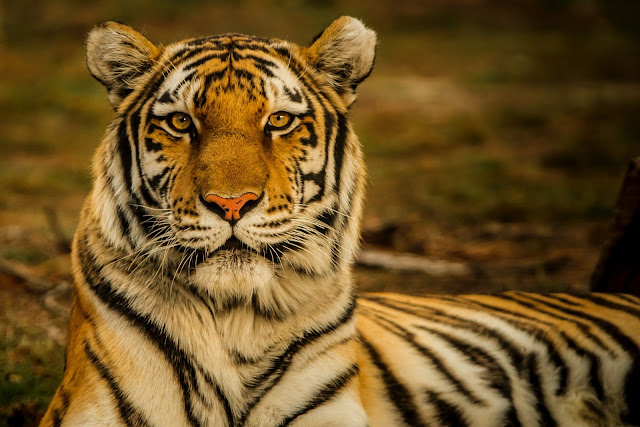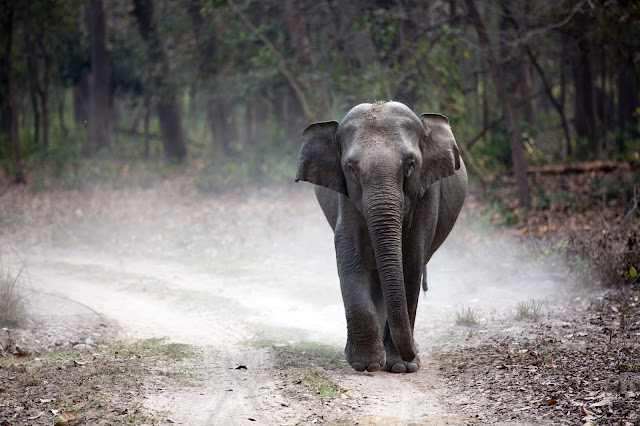Wildlife Is Beautiful Gift Given By God To This Planet. Wildlife Is Not Only Include Wild Animals But Also Include All Undomesticated Lifeforms Including Birds, Insect, Plant, Fungi Even Microscopic Organisms. There Are Different Reasons Why Individuals Abuse Animals.
Animals Are Mainly Divided Into 2 Categories: Domestic And Wild.
Domestic Animal: They Are Put To Use By Man For His Benefits.
Wild Animals: They Are Not To Put Use By Man.
Animal Classes Based On Their Dependency On Human For Survival:
Free Living Animals: Animals That Is Not Directly Dependent On Human For Survival.
Captive Animals: Animals That Live Under Human Care Are In Captivity. They Are Wild, Pet And Domestic.
Feral Animals: They Are Escaped From A Domestic Or Captive Status And They Are Mainly Living As Wild Animal. Animals Which Were Wild Before They Escaped From Captivity Are Not Regarded As Feral.
Wildlife’s Positive And Negative Values:
Positive Values: Ethical, Cultural, Ecological, Scientific, Aesthetic, Recreational, Commercial, Economic, Game.
Negative Values: Damage To Agriculture, Competition, Disease, Conflict With Human.
What Is IUCN?
The International Union For Conservation Of Nature (IUCN) Is The World’s Oldest And Largest Global Environmental Organization. Founded In 1948, Today IUCN The Largest Professional Global Conservation Network.
IUCN Has More Than 1,200 Member Organizations Including 200+ Government And 900+ Non-Government Organizations. The Union’s Headquarters Are Located In Gland, Near Geneva, In Switzerland.
The Work Is Framed By A Global Programme, Developed With And Approved By IUCN Member Organizations Every Four Years.
Wildlife’s Species Classification By IUCN: Critically Endangered, Endangered And Vulnerable
Threatened Species Are Any Species Which Are Vulnerable To Extinction In The Near Future. International Union For Conservation Of Nature Treats Threatened Species Not As A Single Category, But As A Group Of Three Categories: Vulnerable, Endangered, And Critically Endangered, Depending On The Degree To Which They Are Threatened.
Critically Endangered Species: Critically Endangered (Cr) Is The Highest Risk Category Assigned By The IUCN For Wild Species. Critically Endangered Species Means A Species Numbers Have Decreased, Or Will Decrease By 80% Within Three Generations.
It Is Therefore Considered To Be Facing An Extremely High Risk Of Extinction In The Wild.
Endangered (EN) Species: Endangered (EN) Species Is A Population Of Organisms Which Is At Risk Of Becoming Extinct Because It Is Either Few In Numbers, Or Threatened By Changing Environmental Or Predation Parameters.
Also It Could Mean That Due To Deforestation There May Be A Lack Of Food And/Or Water. It Is Therefore Considered To Be Facing A Very High Risk Of Extinction In The Wild.
Vulnerable (VU) Species: Vulnerable (VU) Species Is A Species Which Has Been Categorised By The IUCN As Likely To Become Endangered Unless The Circumstances Threatening Its Survival And Reproduction Improve.
It Is Therefore Considered To Be Facing A High Risk Of Extinction In The Wild.
NATIONAL WILDLIFE CONSERVATION PROJECT
The Tiger Conservation Project
Tigers Once Inhabited A Vast Area From Turkey To The East Coast Of Russia And China, North To Siberia And South To The Indonesian Island Of Bali.
The Royal Bengal Tiger, Panthera Tigris Tigris, Has Always Been An Integral Part Of The Life And Legend Of India.
At The Beginning Of The 1900s, The Indian Tiger Population Was Estimated At 40,000 Animals. The First Official Estimate, Done In 1972, Recorded Only About 1800 Tigers.
This Led To The Establishment Of A Task Force Under The Indian Board Of Wildlife, And Based On Their Recommendations, ‘Project Tiger’ Was Launched On 1 April 1973 With The Following Objectives:
- To Maintain A Viable Population Of Tigers In India For Scientific, Economic, Aesthetic, Cultural, And Ecological Values.
- To Preserve, For All Times, Areas Of Biological Importance As A National Heritage For The Benefit, Education, And Enjoyment Of The People.
The Blackbuck /Indian Antelope Conservation Project
The Blackbuck (Antilope Cervicapra), Or Indian Antelope, Is Exclusive To The Indian Subcontinent And Is One Of The Most Elegant Antelope Species In India.
Its Striking Sandy Color And Beautiful Spiraled Horns Make It Unquestionably The Most Splendid Specimen Of The Antelopes. It Is Also The Swiftest Long-Distance Runner Among Animals; At The Slightest Hint Of Danger, It Can Run For About 10 Km At 60 Km/H.
The Blackbuck Was Once Very Abundant, But Constant Persecution By Humans Has Sadly Reduced Its Numbers, And It Is Now Considered To Be An Endangered Species.
The Blackbuck Is No Longer Found In Regions Where It Used To Thrive. It Was Distributed Throughout The Plains Of Punjab, Haryana, Uttar Pradesh, Rajasthan, Orissa, Gujarat, And Tamil Nadu, And Was Hunted By The Princely States With The Help Of Trained Cheetahs.
The Blackbuck Is Essentially An Animal Of Open, Flat, Or Slightly Undulating Terrain, And Reaches Its Greatest Abundance In Areas Covered With Thorn And Dry Deciduous Forests. With The Destruction Of Forests, However, The Animal Has Adapted To Wastelands And Agricultural Fields.
After The Disappearance Of The Cheetah In The Early 1960s, The Blackbuck Population Exploded, And The Species Was Found In Large Numbers In The Central And Southern Parts Of Punjab. It Began To Be Branded As A Crop Raider And Was Hunted Indiscriminately, Especially During The ‘Grow More Food Campaign’. Its Flesh Was Relished By All.
The Blackbuck Was Listed Under Schedule I Of The Wildlife (Protection) Act, 1972, And Punjab And Haryana Honored It As Their State Animal. Now There Are Blackbucks In The Abohar Area Of Punjab, Rajasthan, And Haryana States.
The Great Indian Bustard Conservation Project
The Great Indian Bustard (Ardeotis Nigriceps) Is A Large, Handsome Bird Of The Shortgrass Plains Of The Indian Subcontinent.
It Shared Its Habitat With The Blackbuck (Antilope Cervicapra), Chinkara (Gazelle Bennetti), Nilgai (Boselephus Tragocamelus), Wolf (Canis Lupus), Fox (Vulpes Bengalensis), Jackal (Canis Aureus), And Wild Cat (Felis Chaus), But Is Now Confined To A Few Pockets In Rajasthan, Gujarat, Madhya Pradesh, Andhra Pradesh, And Karnataka States In India.
The Great Indian Bustard Is An Endangered Species With Less Than 1000 Surviving Individuals. Ironically, It Is The State Bird Of Rajasthan And An Indicator Of The Health Of The Grassland Ecosystem Of The Indian Plains, But It Is On The Brink Of Extinction.
The Great Indian Bustard Forages, Shelters, Displays, And Breeds In The Grasslands, And Its Absence Is The First Warning Signal That Grasslands Are Deteriorating.
The Need For ‘Project Bustard’;
Conservation Measures In India Have Shown That By Identifying An Indicator Species And Focusing Attention On It And Its Habitat, A Substantial Part Of The Natural Ecosystem Can Be Protected, Which Benefits An Array Of Threatened Species.
The Following Is A Proposed List Of Objectives For Initiating ‘Project Bustard’:
Conserve The Habitat Types Of The Great Indian Bustard And Its Associated Species;
Establish, With The Cooperation Of The State Government And Local People, More Bustard Conservation Areas;
Supervise And Coordinate Management Of Bustard Conservation Areas;
Coordinate Long-Term Studies On Bustards And Their Habitats In Different States;
Produce Educational Material For Publicity, And For Decision Makers, Stakeholders, Students, And Others;
Integrate Bustard Habitat Conservation With National Grazing Policy And Overall Land Use Patterns.
The Bombay Natural History Society Is A Pioneer In Promoting The Conservation Of The Great Indian Bustard, And Undertakes Intensive Campaigns To Educate And Encourage The Government Of India To Take Appropriate Measures To Reverse The Declining Trend Of The Species.
The Elephant Conservation Project
Initiated In 1992 By The Government Of India Project Elephant Aims At Conserving Elephants And Their Habitat And Of Migratory Routes By Developing Scientific And Planned Management Measures.
Under The Project Welfare Of The Domestic Elephants Is Also Considered, Issues Like Mitigation Of Human-Elephant Conflict Are Also Taken Care Of.
The Project’s Endeavour Is To Strengthen The Measures For Protection Of Elephants Against Poachers And Unnatural Death.
Apart From These Projects, GOI Also Has Been Handling Projects Like Vulture Conservation And India Rhino Vision (IRV) 2020.
The Sea Turtle Conservation Project
With An Objective To Conserve The Olive Ridley Turtles, The UNDP Sea Turtle Project Was Initiated By Wildlife Institute Of India, Dehradun As The Implementing Agency In November 1999.
The Project Is For 10 Coastal State In India Especially Odisha Where It Has Contributed Towards The Preparation Of A Map Of Breeding Sites Of Sea Turtles; Identification Of Breeding Places And Habitats Along The Coast Line, And Migratory Routes Taken By Sea Turtles.
The Project Also Helped In The Development Of Guidelines To Safeguard The Turtle Mortality Rate And For Tourism In Sea Turtle Areas.
Amongst The Major Achievements Of The Project Is The Demonstration Of Use Of Satellite Telemetry To Locate The Migratory Route Of Sea Turtles In The Sea.
The Crocodile Conservation Project
The Gangetic Gharial (Gavialis Gangeticus) Is A Thoroughly Aquatic Crocodilian And A Resident Of Deep, Fast Flowing Rivers. It Is Primarily A Fish-Eating Species And Uses Sandbanks For Nesting.
The Gangetic Gharial Used To Have Wide Range Over All Of Indochina, But Today It Is The Most Endangered Of All The Crocodilians.
The Species Is Practically Extirpated In Bhutan And Myanmar. The Situation In Bangladesh Is Much Worse. No Gangetic Gharials Are Found In The Wild There Due To Heavy Impacts From Fishing Activities And Habitat Degradation.
The Following Projects Are Considered To Be A Priority For Conserving The Gangetic Gharial:
Use Of Population And Habitat Viability Analyses (PHVA) To Develop Future Conservation Strategies
Development Of A National Management Plan In India And Implementation Of The Recommendations Of The Gharial PHVA
Continued Restocking Of Gharials
Continuous Monitoring Of Protected And Restored Populations
Analysis Of Genetic Diversity And The Effects Of A Bottleneck In The Founder Stock
Increased Public Education
Survey Of Gangetic Gharial Status And Distribution In Pakistan
Establishment Of A Captive-Rearing Center In Pakistan
Development Of International Coordination For Gharial Management And Conservation Between India And Nepal
Expansion Of The Restoration Program In Nepal
Gangetic Gharial Status Survey In The River Systems Of Myanmar
Important Environment And Biodiversity Acts Passed By Indian Government
Mining And Mineral Development Regulation Act 1957
Prevention Of Cruelty To Animals 1960
Wildlife Protection Act 1972
Water (Prevention And Control Of Pollution) Act 1974
Forest Conservation Act 1980
Air (Prevention And Control Of Pollution) Act 1981
Environment Protection Act 1986
Biological Diversity Act 2002
Scheduled Tribes And Other Traditional Forest Dwellers (Recognition Of Rights) Act 2006









Good Informative article 👍
ReplyDeleteGood Informative article 👍
ReplyDeletegood article about the wildlife conservation. very informative
ReplyDelete